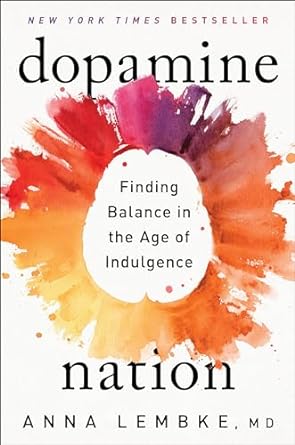 Two men came to the hospital with injuries. (This is not a joke.) One had experienced significant injuries in war, yet felt very little pain. The other, a workman, had been on a construction site when his foot was punctured with a 12 inch nail from a nail gun. He came to the hospital in agony, with the slightest movement of his foot sending excruciating pain through his entire system.
Two men came to the hospital with injuries. (This is not a joke.) One had experienced significant injuries in war, yet felt very little pain. The other, a workman, had been on a construction site when his foot was punctured with a 12 inch nail from a nail gun. He came to the hospital in agony, with the slightest movement of his foot sending excruciating pain through his entire system.
The reason the first man didn’t feel any pain is because his injuries, though severe, were framed in positive terms. The injuries saved his life by allowing him to exit the battlefield for the safety of the hospital. He was glad to be injured and alive – in fact, to be alive because of being injured. Given this framing narrative, he experienced amazing resilience to the impact of pain.
What about the other man with the 12 inch nail through his foot? When the hospital staff finally succeeded in cutting away his shoe, they found the nail had landed between his toes, not puncturing any skin at all. His pain (real physical pain, to be sure) resulted from his perceived lack of resilience to what he thought he had experienced. The key here is what he “thought” he had experienced. What we think about our struggles, our pain, our suffering, has a direct impact on how we feel and our level of resilience. For example, if we think, “this situation is impossible to cope with,” you probably will be unable to cope.
The story of these two men is told in Anna Lembke’s book Dopamine Nation: Finding Balance in the Age of Indulgence. I read the book because I wanted to better understand addiction, which is such an important issue today given the almost endless availability of chemical and behavioral drugs. But for me the most valuable part of Lembke’s research is her findings on how resilience is directly tied to our thoughts about struggle and the mindset we bring to pain. For example, do we approach struggle with an “I can’t cope,” mentality, or do we approach it with a growth mindset that embraces hardship as an opportunity to become stronger?
Lembke’s thesis is that the current addiction crisis is not merely because of the ready availability of chemical and behavioral drugs (though that is a huge part of it, to which she devotes considerable attention), but because we live in a society that pathologizes any type of discomfort. Believing we need to run from all pain, the result is not resilience but fragility, weakness, and ultimately addiction.
Lembke, who is program director for the Stanford Addiction Medicine Fellowship and has received numerous awards for her work, believes that one of the core problems behind addiction can be found in the fact that children growing up in the modern west are increasingly socialized to be fragile.
Perceiving children as psychologically fragile is a quintessentially modern concept… Today, many parents I see are terrified of doing or saying something that will leave their child with an emotional scar, thereby setting them up, so the thinking goes, for emotional suffering and even mental illness in later life.
This notion can be traced to Freud, whose groundbreaking psychoanalytic contribution was that early childhood experiences, even those long forgotten or outside of conscious awareness, can cause lasting psychological damage. Unfortunately, Freud’s insight that early childhood trauma can influence adult psychopathology has morphed into the conviction that any and every challenging experience primes us for the psychotherapy couch.
Our efforts to insulate our children from adverse psychological experiences play out not just in the home but also in school. At the primary school level, every child receives some equivalent of the “Star of the Week” award—not for any particular accomplishment but in alphabetical order. Every child is taught to be on the lookout for bullies lest they become bystanders instead of upstanders. At the university level, faculty and students talk about triggers and safe spaces.
That parenting and education are informed by developmental psychology and empathy is a positive evolution. We should acknowledge every person’s worth independent of achievement, stop physical and emotional brutality on the schoolyard and everywhere else, and create safe spaces to think, learn, and discuss.
But I worry that we have both oversanitized and overpathologized childhood, raising our children in the equivalent of a padded cell, with no way to injure themselves but also no means to ready themselves for the world.
By protecting our children from adversity, have we made them deathly afraid of it? By bolstering their self-esteem with false praise and a lack of real-world consequences, have we made them less tolerant, more entitled, and ignorant of their own character defects? By giving in to their every desire, have we encouraged a new age of hedonism? (p. 35-37)
Lembke’s insights cohere with observations I made in my column at Salvo Magazine in my articles, “What Does Social Science Say About Hardship?” and “Grit and Godliness.” In the latter, I draw on a conversation Keith McCurdy had with Brian Phillips for the Circe Institute podcast. McCurdy explained that in his work as a professional counselor, he continually encounters parents who believe their calling is not to produce sturdy children but happy children. These parents will go to great lengths to try to keep their children perpetually comfortable. McCurdy explains that trying to make children happy by keeping them comfortable is actually self-defeating since it leads to low levels of life satisfaction. Children who have not learned to embrace struggle will more likely be ruled by their emotions and will thus lack the durability that enables them to weather difficulties with sturdiness, competence, and resilience. Moreover, children who have not been trained to embrace struggle will be more likely to go to pieces at the slightest difficulty. From McCurdy:
I ask groups of parents all the time at the beginning of a talk (and I say this is a question to be thinking about as we talk tonight): “would you rather have a child that’s sturdy and capable, or a child that’s happy and successful?” And that really frames it because the two really go in two different directions if that’s your target, because the way we target happiness and satisfaction today is not through struggle – it’s through clearing the path. But if we really target “sturdy and capable” then our children… experience more happiness through life, they experience more peace through life, more joy through life. And parents really struggle with that. But what I tell parents is this: unless we introduce struggle into the lives of their children, they will be run by their emotions.
Being ruled by one’s emotions, and believing we must avoid struggle at all costs, are two of the driving factors that make people vulnerable to behavioral and chemical drugs. And that brings us back to Lembke’s work. She believes that by trying to shield our children from all discomfort, we are creating a generation who are weak and lacking in resilience. When you add this to the ready availability of drugs, is it any wonder we have an addiction crisis?
Lembke goes further, showing how the planned pursuit of moderate pain can recalibrate our hedonic set point, leading to greater mental and emotional resilience over time. It might seem incredible, but she cites research that everything from fibromyalgia to impulse control to mood disorder to ordinary aches and pains can sometimes be addressed with therapeutic applications of moderate pain. For example, the discomfort of cold water immersion causes the body to be flooded with dopamine similar to the effects of cocaine (though afterwards tapering back to baseline dopamine unlike drugs that culminate in a prolonged dip below baseline). In the long term, repeated exposure to activities that toughen you up can reduce one’s susceptibility to pain.
Pain leads to pleasure by triggering the body’s own regulating homeostatic mechanisms… With intermittent exposure to pain, our natural hedonic set point gets weighted to the side of pleasure, such that we become less vulnerable to pain and more able to feel pleasure. (p. 144-5)
She tells of an interesting experiment with dogs, conducted in the 1960’s before ethical regulations prohibiting cruelty to animals. The dogs hind paws were connected to an electrical current, and they were subjected to severe shocks. The dogs were terrified and gave all the symptoms of severe pain. After repeated exposure, however, the dogs not only stopped seeming to mind the pain, but started to experience longer and longer after-response that the experimenters described as “fits of joy.”
With repeated exposure to a painful stimulus, the dog’s mood and heart rate adapted in kind. The initial response (pain) got shorter and weaker. The after-response (pleasure) got longer and stronger. Pain morphed into hypervigilance [which] morphed into a “fit of joy.” An elevated heart rate, consistent with a fight-or-flight reaction, morphed into minimal heart rate elevation followed by prolonged bradycardia, a slowed heart rate seen in states of deep relaxation.”
It’s not possible to read this experiment without feeling pity for the animals subjected to this torture. Yet the so called “fit of joy” suggests a tantalizing possibility: By pressing on the pain side of the balance, might we achieve a more enduring source of pleasure?”
After reading Dopamine Nation, I realized how most of my bad habits arise from trying to avoid discomfort. One example is that if I’m hungry and food is available, I find it hard to wait until the next meal even though, given my personal goals, I know I ought to wait. The root of this struggle is that I don’t like to be uncomfortable. That same is true when it comes to my spiritual and athletic goals: I make excuses because I don’t want to be uncomfortable. So I started to wonder if I could give myself a boost by increasing my tolerance to discomfort. I have been doing cold water immersion for a while, a practice I discussed in my earlier article, “Struggle is an Opportunity For Growth,” but after reading about the experiment with the dogs, I decided to try something a little more drastic: I began seeing how long I could hold two ice cubes simultaneously – one in my right hand and the other in my left. At first I could only do it for 25 seconds, then 30 seconds, then…well, now I can hold the ice cubes until they melt. This has both a short-term and a long-term benefit. In the short-term, the feeling I get afterwards is euphoric, as my body compensates for the pain by flooding my system with dopamine before tapering off to baseline (hedonic set point); in the long-term, I have become more resilient to pain so it takes more to get me rattled.
Further Reading


